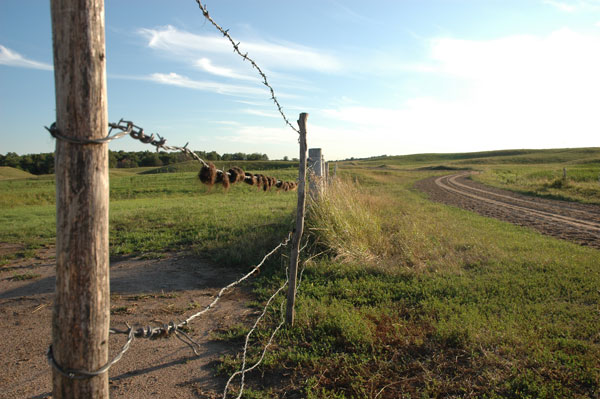Once the purview of crop production, precision agriculture is coming to a ranch near you.
December 19, 2019

Mention “precision agriculture” and most often the focus is on cropping systems. But that’s changing as precision ag technology is now being applied to rangeland settings, according to Mitch Stephenson, a University of Nebraska assistant professor and range management specialist based at Scottsbluff.
Stephenson credits the advances made with precision agriculture on croplands for creating opportunities to apply similar technology tools to rangelands. At the 2019 Range Beef Cow Symposium held in Mitchell, Neb. in mid-November, he highlighted four emerging technology tools designed to help range managers assess the following four questions:
1. How much grass will I have this growing season?
Similar to a weather forecast, the online Grass-Cast platform offers a free, grassland production forecast at the county level throughout the growing season.
To create this plant biomass forecast, the computer model incorporates observed and forecasted weather for a specific region along with data on evapotranspiration, a vegetation index based on land greenness data collected from satellite imagery, and historical weather and grassland production information. Beginning in May, Grass-Cast predictions are updated every two weeks through the growing season.
“This provides near real-time data analysis of how current weather variables are likely to influence forage production later in the growing season,” Stephenson explains. Grass-Cast offers a way to predict biomass production earlier in the growing season, which is beneficial to plan stocking rates, grazing rotations and especially for early detection of drought, he notes.
He adds that Grass-Cast marks the first time we have a tool available to track and forecast plant production estimates across the Great Plains region.
2. Has my vegetation cover shifted over time?
Available as a free precision land management app, the Rangeland Analysis Platfom allows users to monitor rangeland vegetation trends. This technology correlates decades of Landsat satellite imagery with on-the-ground vegetation measurements to create maps showing plant cover at a pasture, watershed or regional/county scale. Specifically, the maps are generated at 30 meter pixels to show percent cover of annuals, perennials, trees or bare ground.
Stephenson calls this an “excellent tool” to monitor ground cover, which is a key indicator of rangeland health. It can also be useful to monitor areas where cedar tree or other invasive species encroachment is a concern.
3. Where are my cattle grazing?
Affordable tracking devices to monitor movement and grazing distribution of livestock are also on the horizon. Stephenson noted that previously GPS tracking collars that were once $1,500 to $2,000 are now in the $100 range. And, even ear tags with tracking technology look promising. “The goal is to get to these tracking devices to a reasonable cost so they could be utilized commercially,” he reports.
Stephenson explains that this technology – which is similar to today’s fitness trackers for people – may allow the ability to track movement to assist with grazing plans, as well as track health parameters of livestock such as water use, body temperature, heat detection and calving data. Some trackers may also offer virtual fence capabilities to control livestock movements without actual fences.
4. What are my cattle eating?
Research evaluating the effectiveness of fecal DNA sequencing to determine diet composition of livestock on the range is also being explored. While this technology is still relatively expensive, Stephenson explains that this process may help better understand what plants livestock are selecting and at what times during the grazing season.
Currently, research in western Nebraska and Wyoming is evaluating cattle’s diet selection with early-season targeted grazing on cheatgrass to develop predictive models of when cattle are most likely to graze it.
Kindra Gordon is a freelance ag writer from Whitewood, S.D.
You May Also Like



